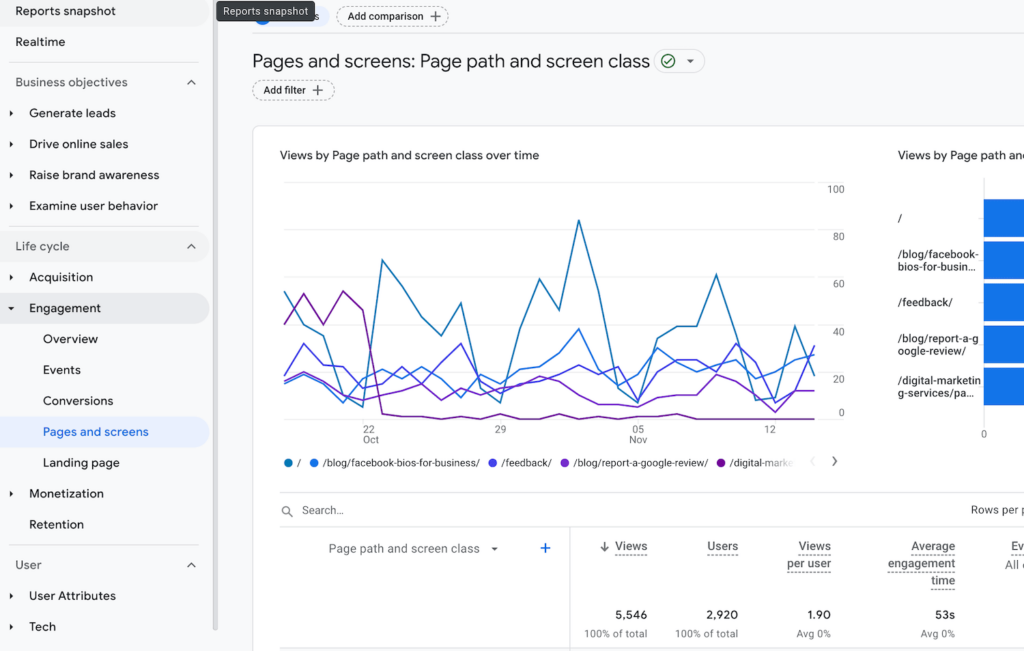Google Analytics Proficiency: Unveiling the Prospective of Secondary Dimension
Wiki Article
Opening the Power of Secondary Measurement Analytics for Boosted Data Insights and Decision-Making
In the realm of information analytics, key measurements often take the spotlight, yet the true deepness of understandings lies within the world of second measurements. These additional data factors use a nuanced perspective that can brighten patterns and relationships not conveniently obvious in the beginning glimpse. By using the power of additional dimension analytics, companies can introduce surprise fads, discover connections, and essence a lot more meaningful verdicts from their information. The potential for enhanced decision-making with the use of these additional measurements is substantial, guaranteeing a much deeper understanding of complex information sets and paving the method for even more educated strategic selections.
Importance of Additional Dimensions
Discovering the significance of secondary dimensions in analytics reveals the surprise layers of information understandings important for educated decision-making in different domain names. Second measurements give a deeper understanding of main information by using additional context and perspectives. By integrating secondary dimensions right into analytics, companies can remove a lot more extensive and nuanced understandings from their datasets.One secret value of secondary dimensions is their capacity to section and categorize key data, permitting for an extra detailed analysis of details parts within a dataset. This segmentation allows organizations to determine patterns, trends, and outliers that might not appear when looking at the data in its entirety. Second dimensions assist in discovering connections and dependences between various variables, leading to more accurate forecasting and predictive modeling - secondary dimension.
Moreover, secondary dimensions play a vital role in boosting information visualization and coverage. By including secondary measurements to visualizations, such as charts or charts, experts can produce more informative and insightful representations of information, promoting much better interaction of findings to stakeholders. Generally, the assimilation of second measurements in analytics is crucial in unlocking the full capacity of data and driving evidence-based decision-making.
Key Advantages of Making Use Of Secondary Dimensions
Making use of second dimensions in analytics uses companies a calculated advantage by enhancing the depth and granularity of data insights. By dissecting information utilizing secondary dimensions such as time, place, tool kind, or customer demographics, organizations can discover patterns, patterns, and connections that might otherwise stay hidden.Additionally, the use of secondary dimensions enhances the context in which key data is interpreted. It gives an extra comprehensive view of the relationships in between various variables, enabling organizations to make informed choices based upon a more all natural understanding of their data. Furthermore, secondary measurements assist in the recognition of outliers, anomalies, and areas for optimization, ultimately bring about more effective techniques and enhanced end results. By leveraging secondary dimensions in analytics, organizations can harness the full capacity of their information to drive far better decision-making and accomplish their service goals.
Advanced Data Analysis Strategies
A deep study advanced information evaluation techniques discloses innovative techniques for removing beneficial insights from complicated datasets. One such technique is artificial intelligence, where formulas are utilized to identify patterns within information, forecast outcomes, and make data-driven decisions. This method permits for the automation of analytical design structure, allowing the processing of huge volumes of data at a much faster pace than standard methods.Another advanced method is anticipating analytics, which makes use of analytical algorithms and equipment understanding strategies to anticipate future end results based on historic information. By examining patterns and trends, organizations can anticipate consumer habits, market fads, and potential threats, equipping them to make proactive decisions.
Additionally, message mining and sentiment analysis are important methods for drawing out insights from disorganized data resources such as social networks comments, customer testimonials, and survey responses. By examining message data, organizations can understand customer opinions, recognize emerging fads, and enhance their solutions or products based on responses.
Enhancing Decision-Making Through Additional Dimensions

Enhancing decision-making with additional measurements makes it possible for services to recommended you read make more informed and targeted critical selections. For instance, by segmenting client data based upon secondary measurements like acquiring background or involvement degrees, companies can customize their advertising techniques to particular target market sections, leading to boosted conversion rates and client complete satisfaction. In addition, second measurements can aid identify relationships and connections between various variables, making it possible for organizations to make data-driven decisions that drive growth and earnings.
Implementing Additional Dimension Analytics
When incorporating secondary measurements in analytics, companies can open deeper understandings that drive strategic decision-making and enhance general performance. Implementing second dimension analytics requires a structured approach to make sure efficient usage of this effective tool. The initial step is to recognize the essential metrics and dimensions that align with the company's strategic goals. This entails understanding the particular inquiries the company seeks to address and the information points called for to address them.
Furthermore, organizations should utilize progressed analytics devices and modern technologies to simplify the procedure of integrating second dimensions. These tools can automate information processing, analysis, and visualization, permitting companies to concentrate on interpreting insights as opposed to hand-operated information adjustment.
Final Thought
In conclusion, second measurement analytics play a crucial duty in boosting data insights and decision-making procedures. By using innovative data evaluation strategies and applying second dimensions efficiently, companies can open the power of their data to drive calculated business choices.In the world of information analytics, main dimensions usually take the spotlight, but the true depth of understandings exists within the world of secondary measurements.Making use of additional measurements in analytics provides organizations a critical benefit by augmenting the depth and granularity of information insights. By leveraging More Bonuses secondary dimensions in analytics, companies can harness the complete potential of their information to drive much better decision-making and achieve their business purposes.
Carrying out information recognition procedures and normal audits can aid preserve information quality and dependability.
By utilizing innovative data analysis techniques and executing second measurements efficiently, organizations can unlock the power of their information to drive critical service decisions.
Report this wiki page